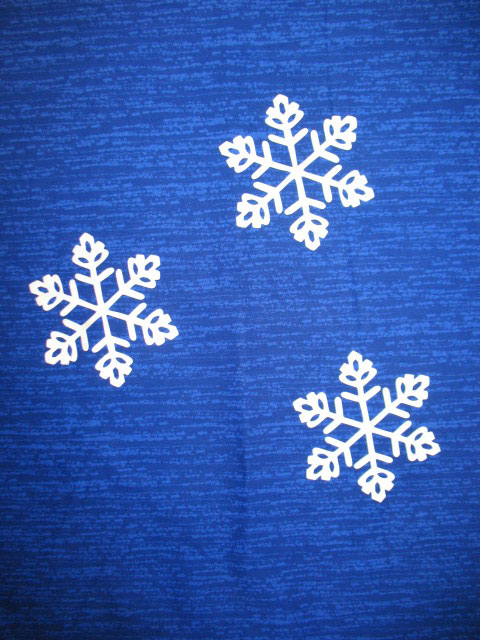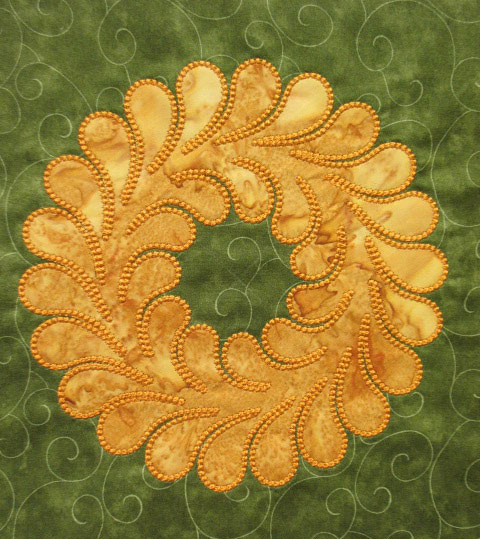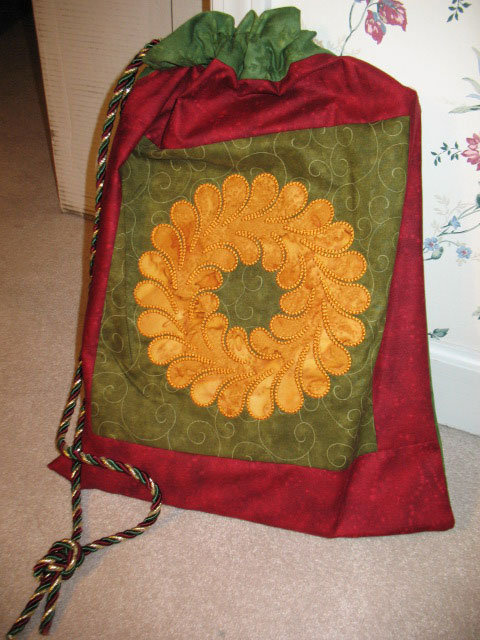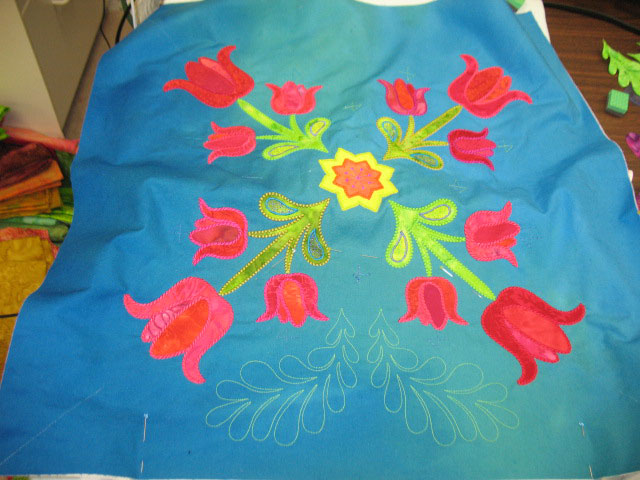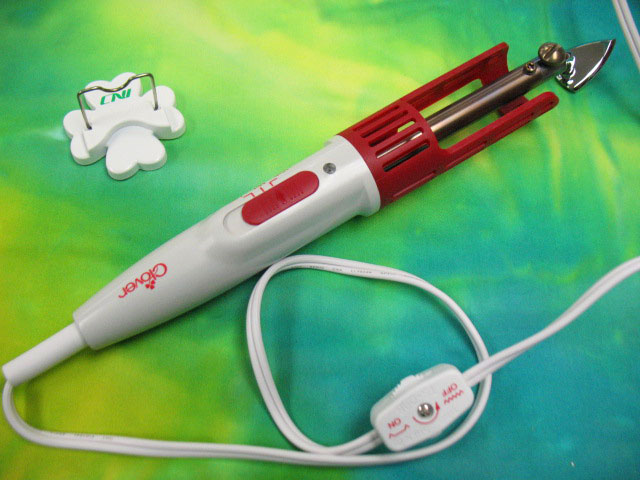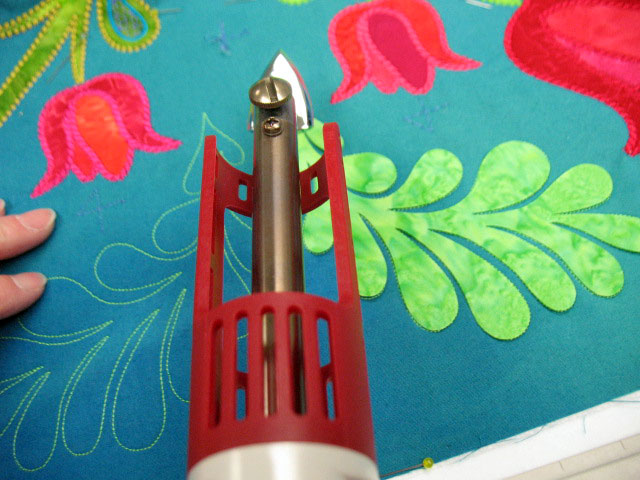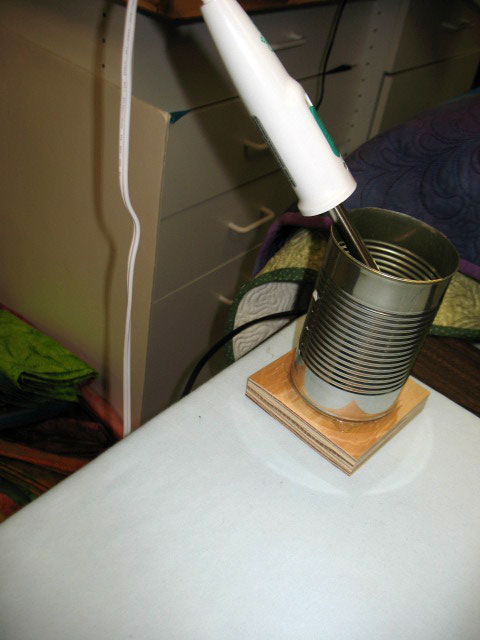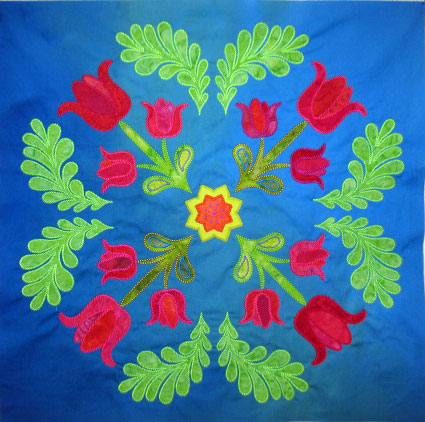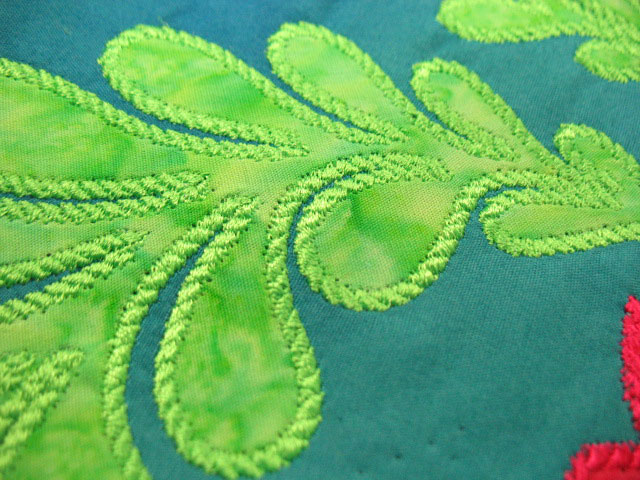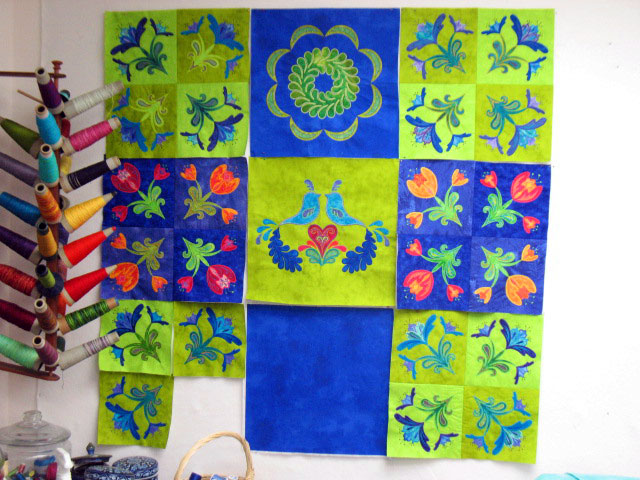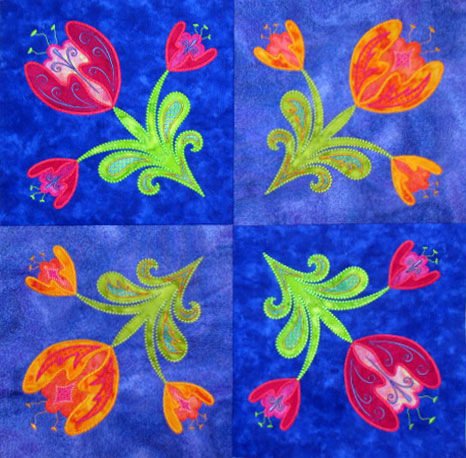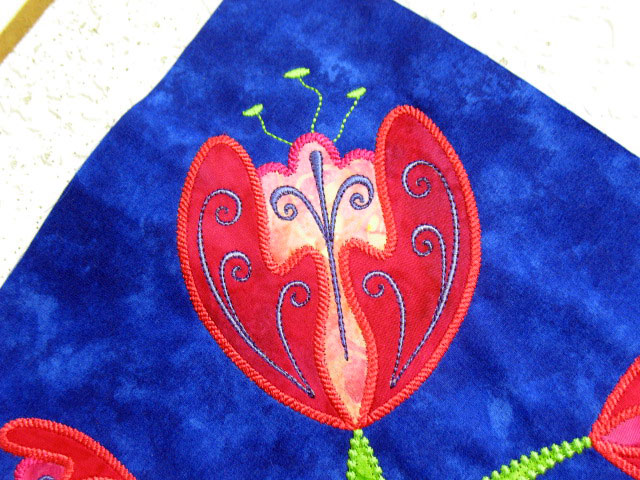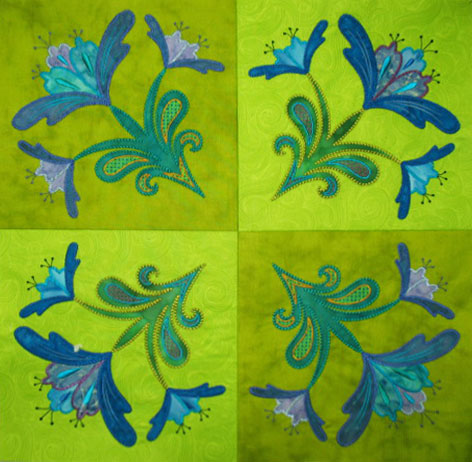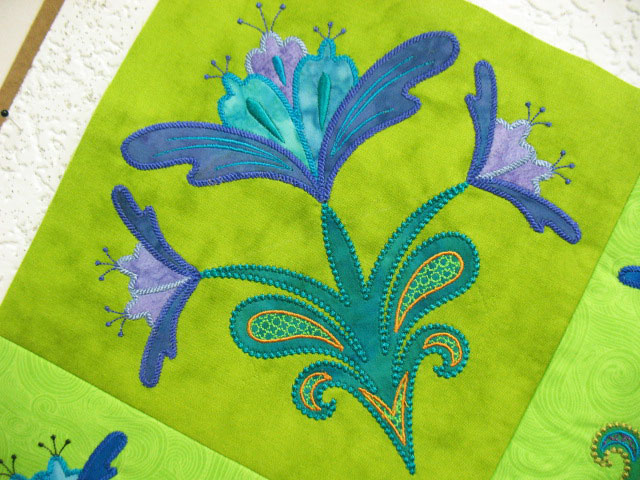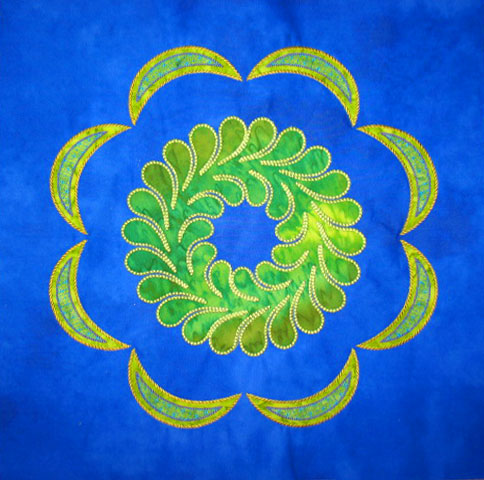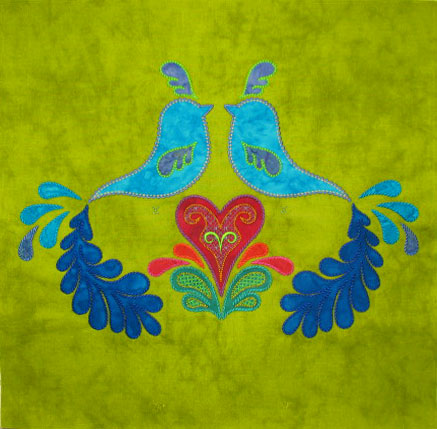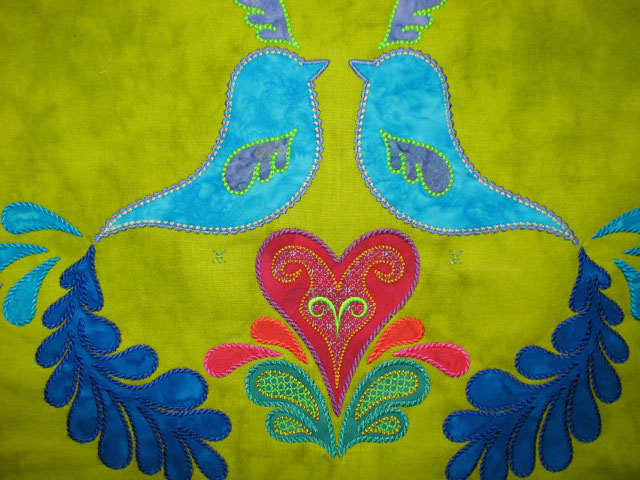December 31st, 2012

Earlier this month, I had the honor of being the December instructor for SewCalGal’s 2012 Free Motion Quilting Challenge. My post was about machine quilted border designs, and you can read it here and also watch a free video tutorial about a certain type of feathered border design on the same page. One part of this process that’s been an unexpected thrill for me is to get to see what different quilters have done as they’ve played with my border challenge. Holy smokes, I am blown away! I never dreamed that people would find the time to play with borders much this month since there are so many other distractions vying for attention. There are so many samples of great mini quilts that have linked up that I can’t post them all, so I’m going to link to just two. Check out Terry Whyte’s blog post about her mini quilt and you’ll see what I mean. The textures she’s created with her borders almost form areas of relief and I just want to reach out and touch her quilt! If you’re not totally blown away by that quilt, then check out Martha Briese’s blog here. OMG!! Her diamond border is gorgeous and look how cool her asymmetric border is! Really, I am blown away by what people are coming up with! If you haven’t taken advantage of all the wonderful tutorials in the 2012 Free Motion Quilting Challenge, don’t waste anymore time. You can access all of them on SewCalGal’s blog here.

Don’t know about you, but I’m kind of going through withdrawal because it’s been so long since I’ve sewn anything due to the holidays. Expect some photos of works in progress in the next couple days as my fingers are itching to get back to some stitching!
philadelphia lasix
Filed under
Free Motion Quilting.
December 17th, 2012
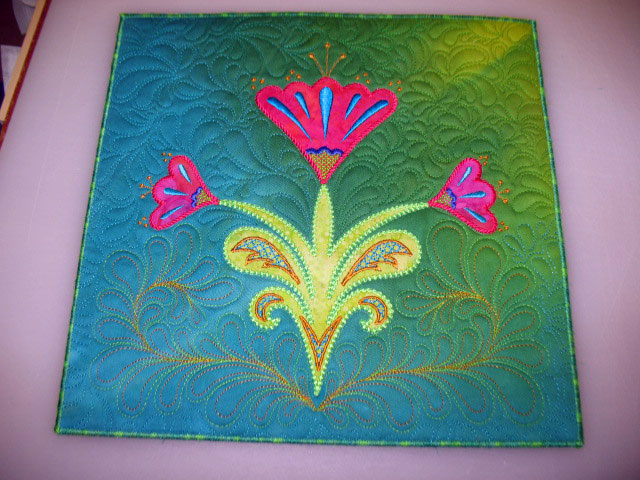
A friend of mine at work lost her dad last week. My dad died almost 5 years ago and had been sick for a few years before that. Even though his death was expected and honestly, was kind of a blessing for him, I felt really broken inside for awhile when he died. I thought it might lift my friend’s spirits if I sent a quilted card with some nice color her way. Normally, I make these quilted cards roughly 8 inches x 11 inches but this one finished around 11 x 11 and you can really make them whatever size you’d like. I’ve changed my method of construction over the years, so here’s how I made this one.
I started by embroidering this flower onto a piece of hand dyed cotton sateen fabric. Nothing is as striking as hand dyed colors and the cotton sateen always throws off nice shadows once it’s been quilted. Here was my initial “substrate:”

When I first started making quilted cards, I would next fuse this to a piece of Peltex or Timtex. (These are very firm stabilizers that are about 1/8 inch thick.) I don’t do that at this stage anymore, because when you quilt onto Peltex/Timtex, the quilting looks fairly flat and you lose that wonderful texture that quilting imparts. So, my work-around is to throw a piece of scrap batting behind it at this stage and start quilting. For this one, I used an ultra thin polyester batting and began by outlining all the applique shapes with invisible thread (Monopoly by Superior Threads), and then by quilting mirror image feathers that splayed open at the base of the flower:
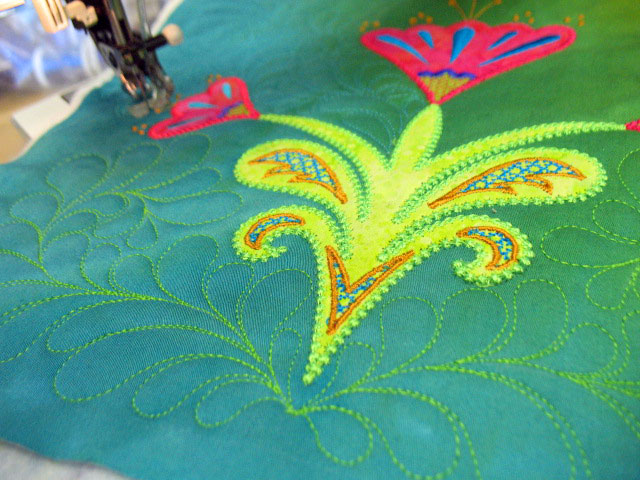
Once the feathers were quilted, I started on my background quilting using that rudimentary “Plumify-It” design:
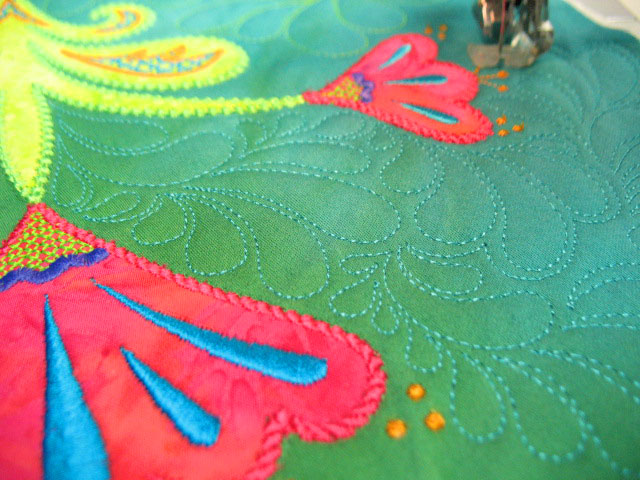
I felt like it could be a little “juicier,” so I went back in with gold rayon thread (24 karat gold by Robison Anton) and hyperquilted the feathers:

Every thread I used for quilting was a thread with a sheen. (i.e. rayons, polyesters, trilobal polyesters.) Because the cotton sateen has a slight sheen or luster to it, if you quilt with cotton (matte finish), it will stick out like a sore thumb. As I worked my way around this piece with background quilting, I changed my thread color so that it kind of coordinated with the background color:
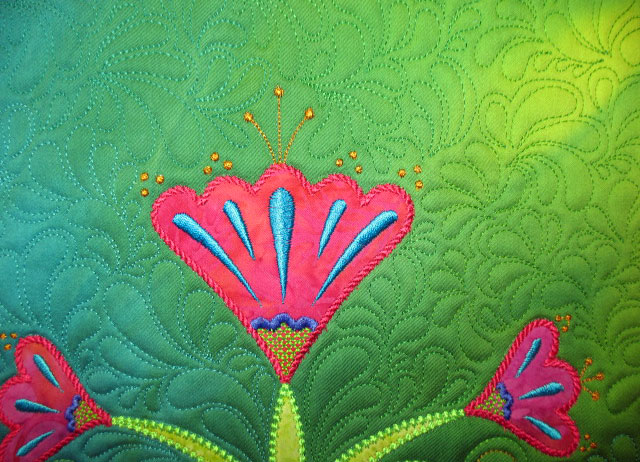
Once all the quilting was done, I trimmed it a bit and then spray basted it to a piece of Peltex. I then went back in with invisible thread and re-outlined each applique shape and also stitched just outside my quilted line for the feathers. This is redundant, but I did it because it’s a way to make those important motifs protrude out a bit more. (If you make a quilted card, this part is not necessary…this is my overkill style!) I then fused a piece of solid violet fabric to the backside of the card. (You want this to be a solid or gently mottled fabric because this is where you’ll write your note.) I finished the edges with a variegated trilobal polyester thread (“Grass,” one of the YLI Variations line) and here’s what the edge looked like:
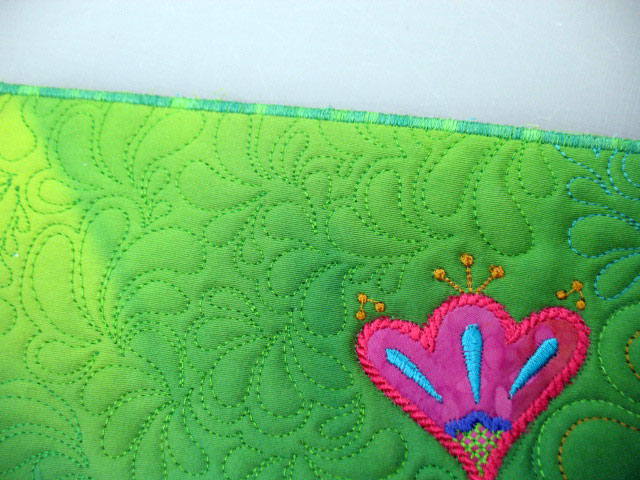
…and here’s what the backside looked like before the note was written:
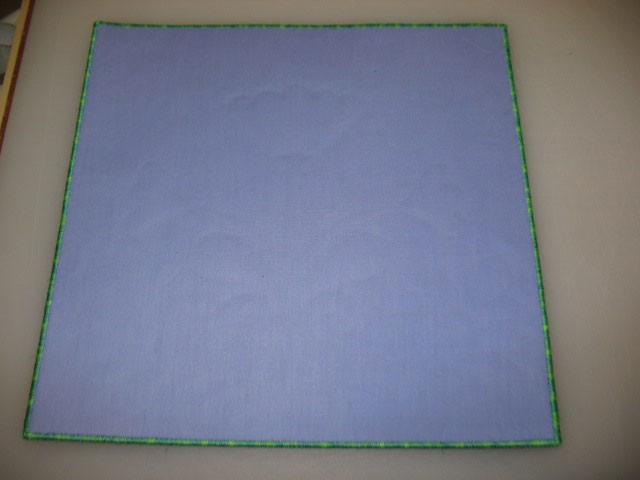
It’s so nice to make small projects that can be completely finished in a reasonable period of time!

bupropion england
Filed under
Machine Embroidered Applique.



